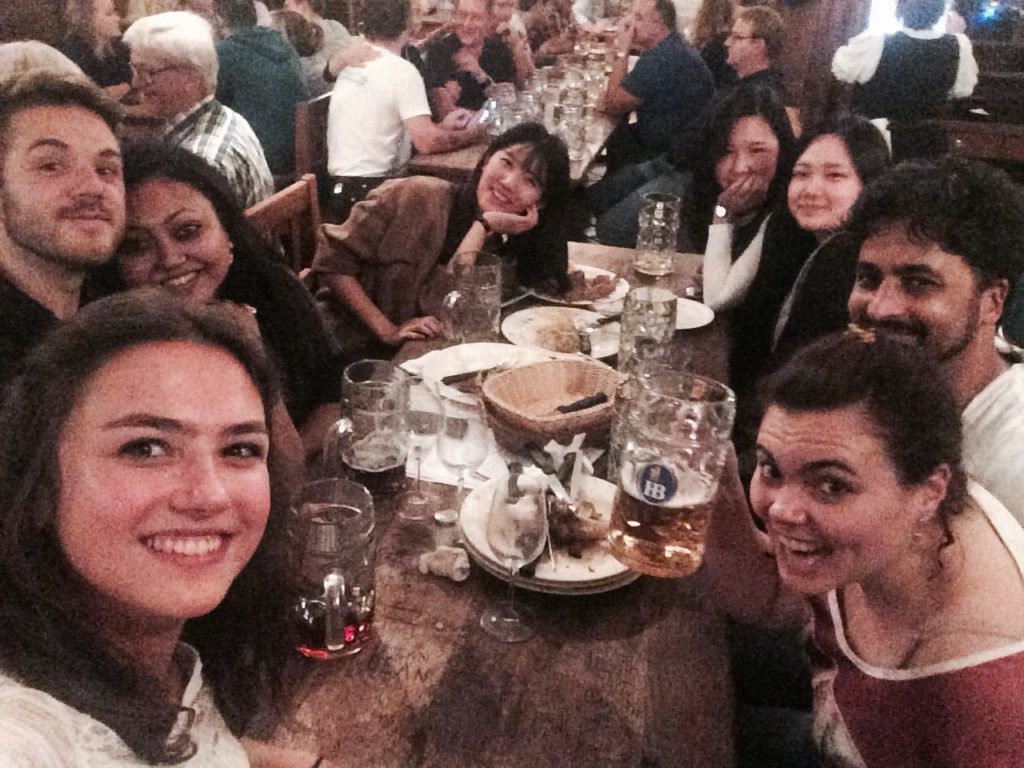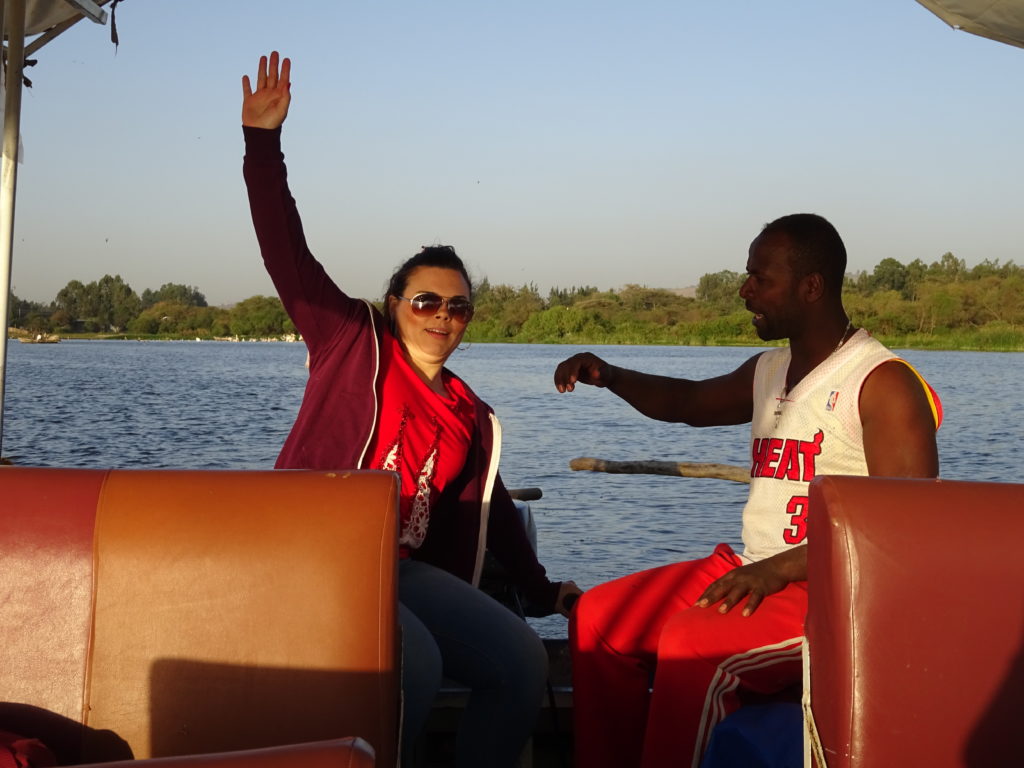One thing I loved about my Master’s degree program in Cape Town was that most of the students came from different countries around the world. One of the guys I was studying with was Tiratu from ETHIOPIA, who officially deserves the title as “Number 1 Cultural Ambassador of Ethiopia in South Africa” as he was immensely proud of his country and culture, and did not miss a single opportunity to tell us how great Ethiopia is.

When we spoke about his home town Shashamane, he mentioned that there are a lot of Jamaicans where he is from, and they are all Rastafarians he said. But wait, wait wait …. As a lover of Caribbean culture you can’t just drop something like this on me and not explain. Please explain, Tiratu, what are these Jamaican Rastafarians doing in your home town??
Apparently, when Hale Selassie I (the former king of Ethiopia, who is worshiped by the Rastafarian community) was still alive, he donated a piece of land of about 300 acres to Rastafari’s who were formerly displaced from Africa. Of course, all Rastafarians were welcome, but his donation was primarily directed to those who had been taken from Africa (primarily as slaves), but who wanted to return to the “Promised Land”, Ethiopia. Since Selassie I made his donation in 1948, several hundred Rastafarians from the Caribbean, mostly Jamaica and Trinidad, but also other Caribbean islands, settled on the land that was given to them by the king.

Fast forward now, a few months after I met Tiratu for the first time, I had finished my first semester in Cape Town, and I was back in Germany, in the middle of an internship in Munich.

One day I was asked to attend our colleagues from Berlin. Of course, my friend Lina and I took them to a typical Bavarian “Brauhaus” (basically a traditional place where people drink a lot of beer) and chatted about the world.
One of our colleagues and I somehow ended up talking about his trip to Ethiopia and Somaliland (who even goes to Somaliland?), where he visited the Danakil Depression. New places I’m hearing of here, anyone ever heard of that? Well, the Danakil Depression is the HOTTEST PLACE ON EARTH and the lowest place on the planet. Sounds cool, right?
My plan was made right there: I’m going to Ethiopia to visit the Danakil Depression and the Caribbean Rasta village.
Since my Master program included several semesters, but in between I needed to complete course work at my German university (and this internship I was doing), I had to make several trips to Cape Town. As I researched the best and cheapest connections to Cape Town, I came across Ethiopian Airlines who offers very affordable flights to Cape Town through Addis Ababa.

Since I had to fly back to Cape Town in January, which is a VERY cold month in Germany anyways, and I wasn’t too crazy about arriving in Cape Town too early before my classes started, I convinced my friend Ainhoa from Spain to make the trip to Ethiopia with me.
My plan was: Eat Injeera (the national dish) all day, visit the Rasta village and see the Danakil Depression!

Turned out, getting to Danakil was more complicated than I thought: It takes several days to get there and get back, and it is a very expensive trip because your 4×4 vehicle needs to be accompanied by a second one, in case yours breaks down. You drive through the middle of the hot hot desert and chances you will die are high, so you have to pay the price to stay alive. Transport up there is straining and you cannot really be on a very tight schedule. Long story short, I left Danakil out as I realized it was simply a crazy white-people-idea that I should leave for another day or year or never.
Really I had to choose: Rasta village or Danakil Depression because one week was simply not enough. I decided to see the Rasta village….
Visiting the Caribbean Rasta village was quite a surprising deal, though, I must say. I can’t even tell you what I expected, but I can tell you for sure that I did not expect THIS to happen to me.
I had visited the Rasta village primarily for this: To meet the people who left their home in the Caribbean to live in Ethiopia, one of the poorest countries of the world, with many developmental problems that even the Caribbean does not have, although plenty Caribbean countries do have quite a few “Third-World-Problems” (since this is my Blog, I can be as politically incorrect as I want, thanks).




I must humbly admit that I did not take many pictures during my visit, simply because I was busy taking in impressions and at that time I was not planning on producing a blog about the trip. Sorry not sorry, life is tough.
One of the things I was so curious about was to find out what brought them there, how was their journey, how has their life been, were they enjoying their life and Ethiopia, have they been able to integrate into Ethiopian society? …. I had a million of questions to ask my people.
As we were taking in the impressions in the village, taking strolls through the streets and stopping by at every bar, shop or restaurant we passed, speaking to dozens of people, we got my questions answered one by one…. Apparently, the Rasta’s have been struggling quite a bit … Here’s what life in the Caribbean Rasta village is really like, and what kind of situation the Rasta’s are really facing.
You know, Ethiopia has been one of the only countries I visited in the past years where I did not speak people’s language. Until I reached Ethiopia, I didn’t realize what kind of a difference it makes when you are not able to communicate with people. You can’t understand a single menu (it’s in Amharic), most people cannot understand your questions, you can’t greet and have small talk (okay, maybe say “hello, how are you”, but honestly that’s as far as it goes), AND – in a country where bargaining is part of every-day life – you CANNOT BARGAIN. You wouldn’t believe how problematic this can be when you are a person (like me) who likes to bargain the sh*#t out of people to get a normal local price. If it’s one thing I don’t like it’s being ripped off. But oh well, you can try a thing and offer a lower amount, but if the driver or vendor says no, you either take it or leave it.
I also realized how much of your cultural learning experience it takes away when you are not able to have conversations with people. Funny enough, once I was in the Caribbean village in Shashamane I felt like I was home, although I was in the middle of an African country that is unfamiliar to me. I could not only speak to people, but people also spoke to me in an accent I was familiar with, and they understood my way of communicating as well. It was amazing … Although I learned many theories about the importance of language and communication during my Bachelor studies in Multilingual Communication (ironic, I know), it is in situations like these that you realize you cannot fully understand a person’s culture unless you speak their language.
Ethiopia fascinated me to an extend that I cannot even find words for because it was so different to anything I had experienced before. The Ethiopian culture, with their food, their lifestyle, their traditions, their dances, their music, is so distinct to everything I knew until then, that my interest in it just grew. I remain blown away from all my impressions.
































My trip taught me that no matter how you envision something, it always turns out different… and with an open-mind, chances are high it turns out surprisingly, positively different in the end.
What are your thoughts? Have you made similar experiences? Drop me a comment!
If you’ve become curious about my travel stories, subscribe to my Youtube-channel and my mailing list (check the side bar) to follow all my adventures.


